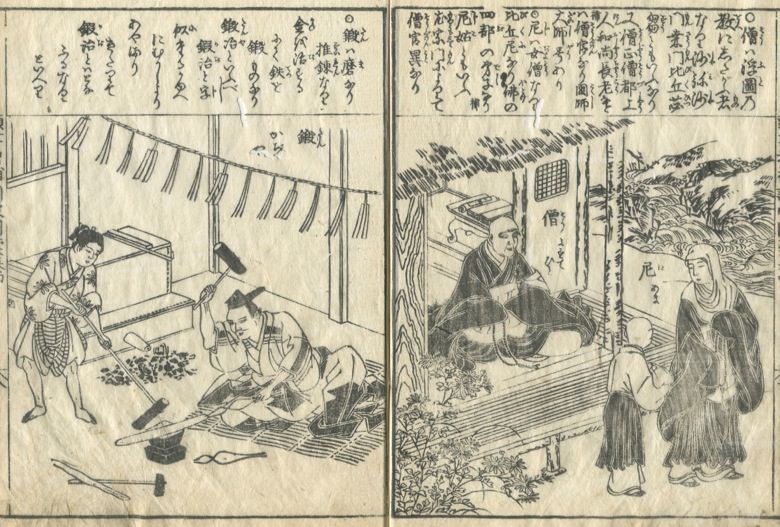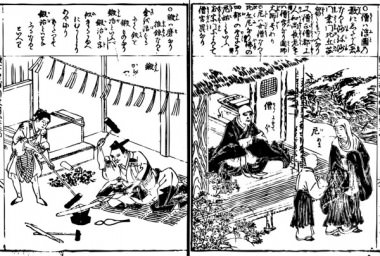The picture is drawn on the right for the priest and the nun.
although the first half cannot be read, “a priest ” has priest officials, such as a “bishop”, “sozu”, “a saint”, “Oshyou”, and a “senior”, and the “Kokushi” “Daishi” .
“A nun” is a female priest and is called “比丘尼 (Bikuni).”
It becomes a pupil of four copies of the Buddha, and also calls it “尼姑”
However, seemingly, it is not a priest official.
The blacksmith is drawn on the right.
Since the main words of the text are not known, a meaning cannot be held, but “metallurgy”, “iron is trained”, etc. can be read.
Although it is probably visible to a swordsmith with a picture, this neighborhood may be scenery not much unchanging with the present age.
右には僧侶と尼が絵が描かれています。前半が読めないのですが、「僧(そう)」には「僧正(そうじょう)」「僧都(そうず)」「上人(じょうにん)」「和尚(おしょう)」「長老(ちょうろう)」などの僧官があり、「国師(こくし)」や「大師(だいし)」といった号もあります。「尼(あま)」は女性の僧で、「比丘尼(びくに)」と呼ばれます。仏の四部の弟子となり、「尼姑」ともいいます。ただし、僧官ではないそうです。
右には鍛冶が描かれています。本文の主要な単語が分からないため意味が掴めなないのですが、「冶金(やきん)」「鉄を鍛える」などは読み取れます。絵では恐らく刀鍛冶に見えますが、この辺りは現代とあまり変わりない風景かもしれません。

